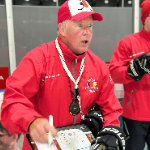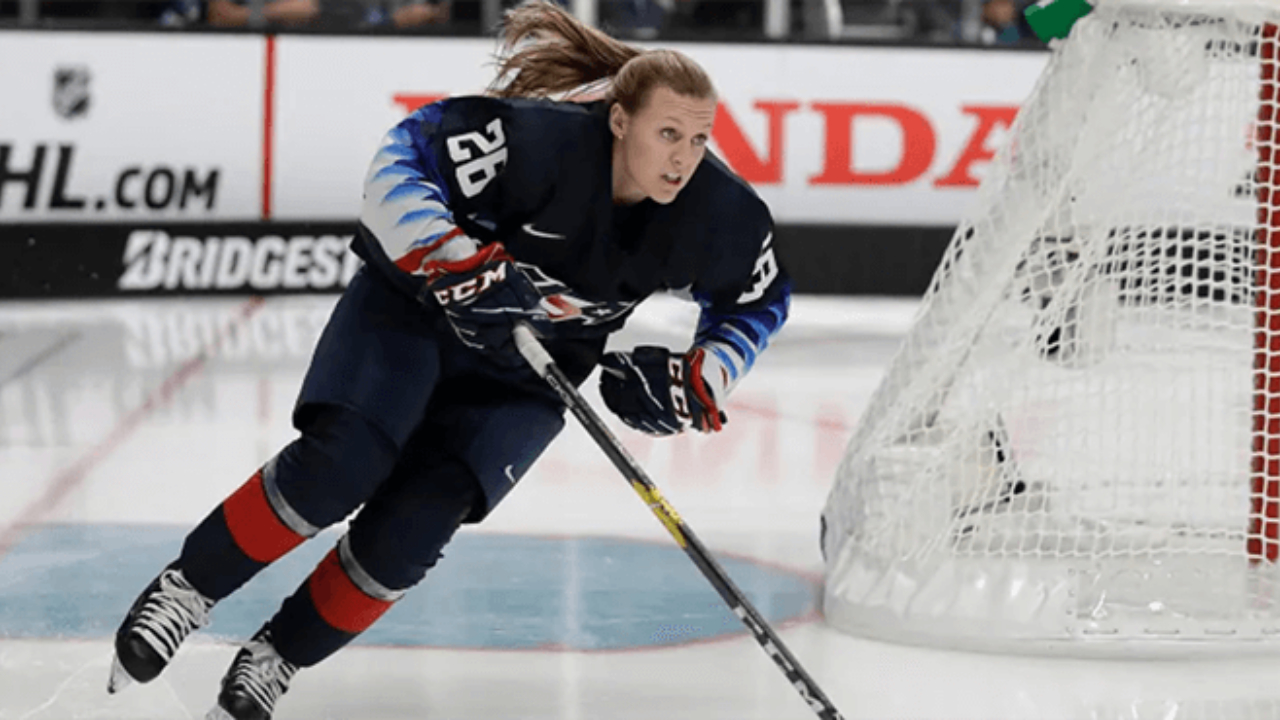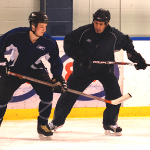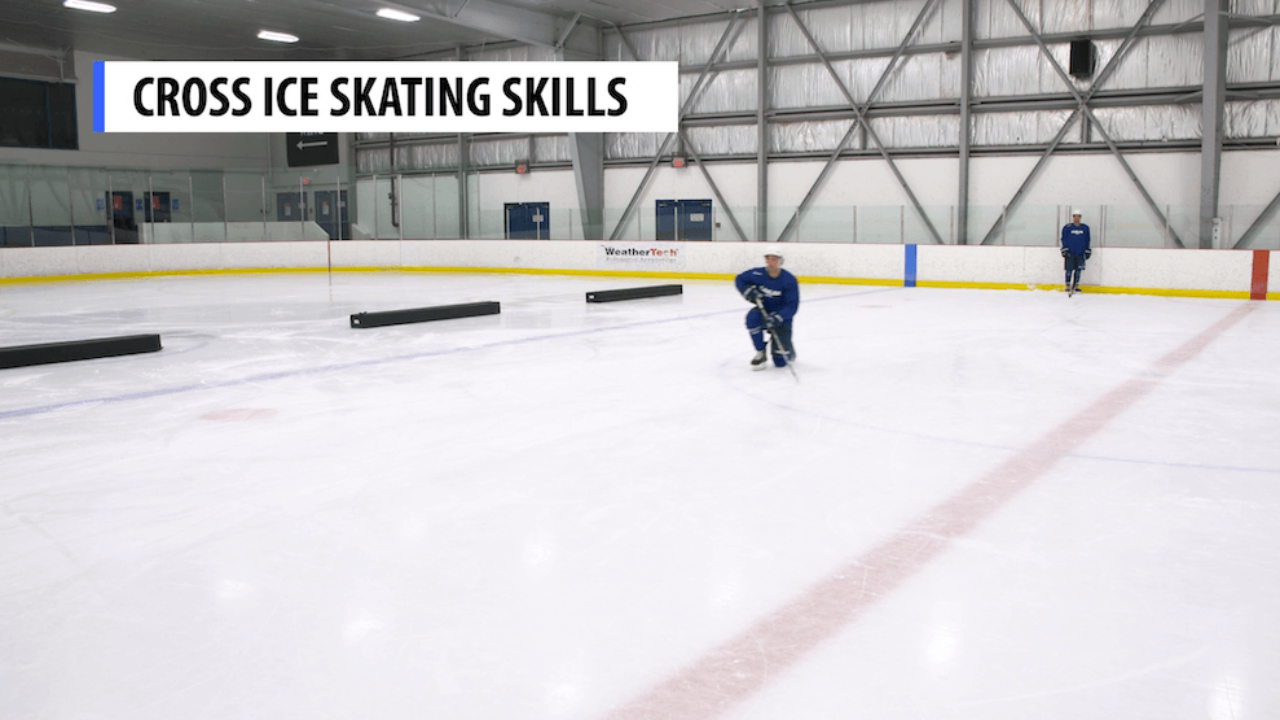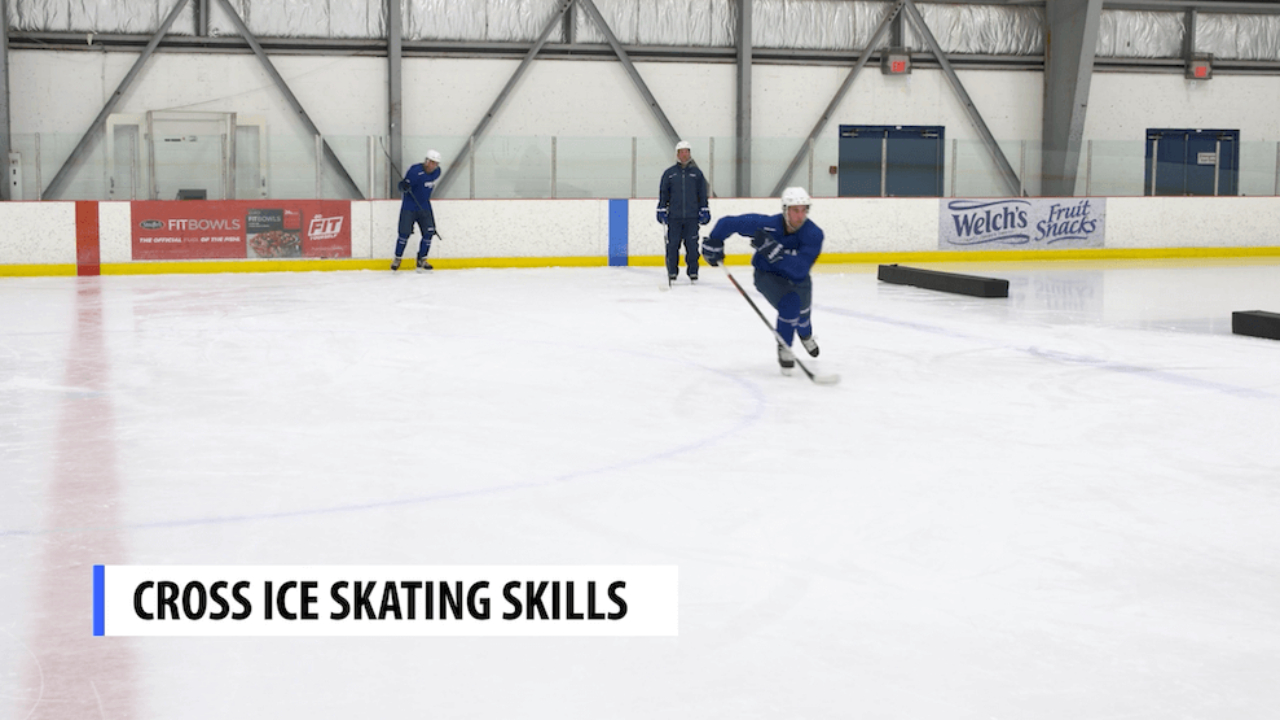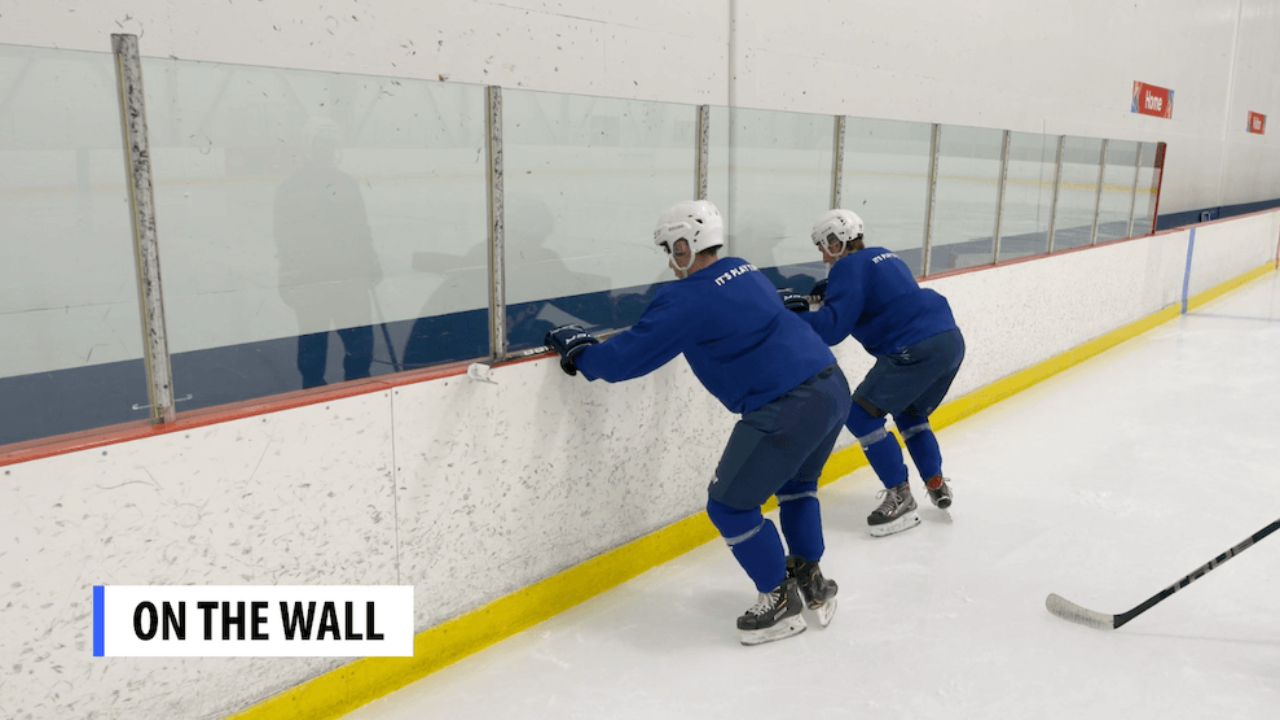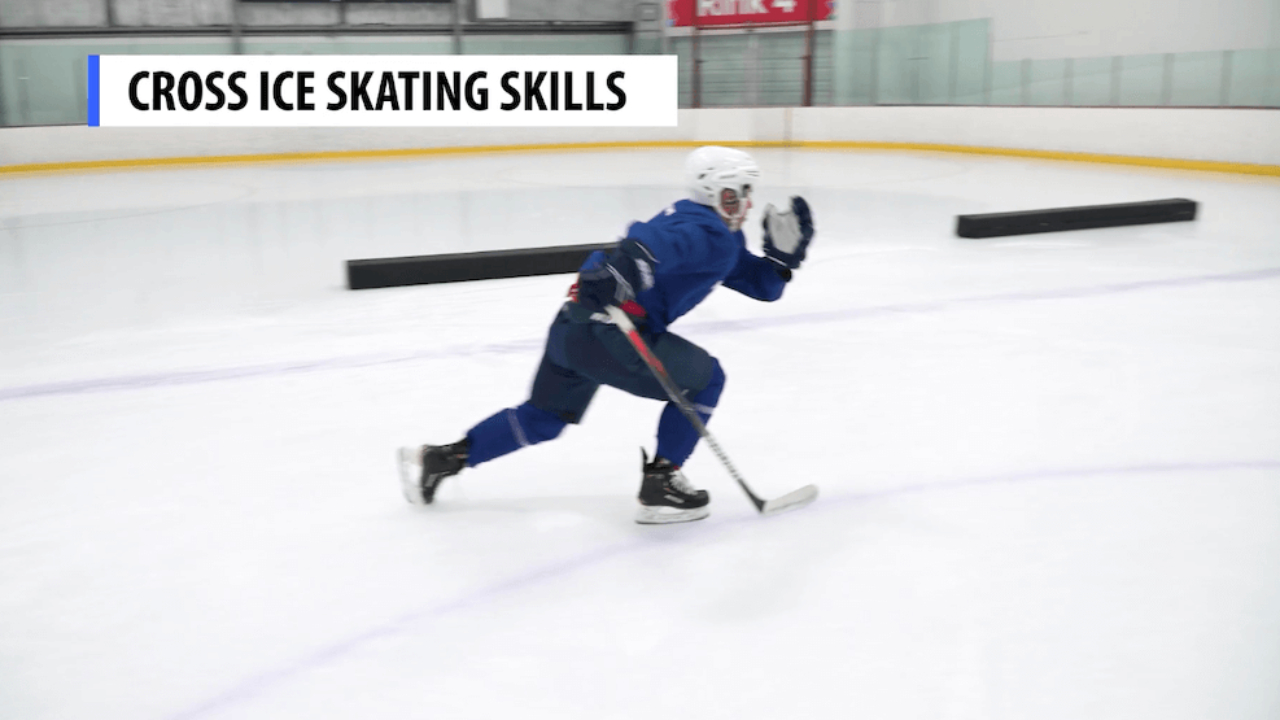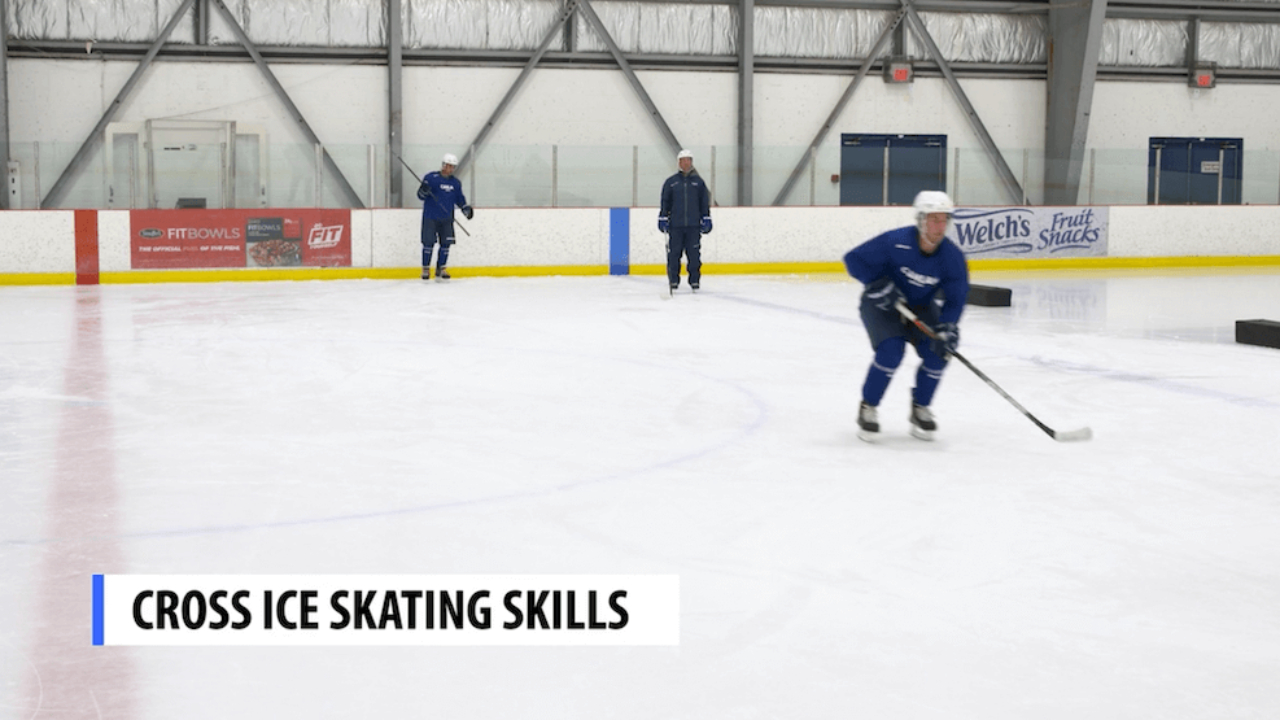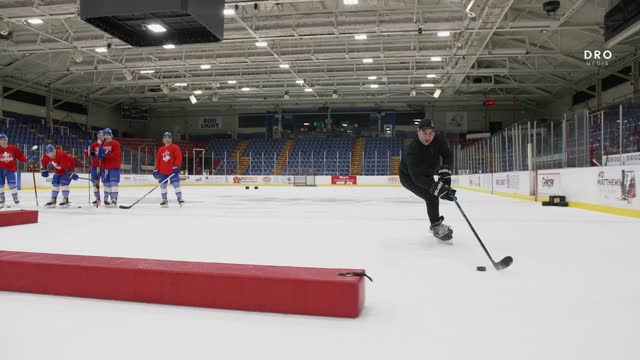Efficient skating isn’t just about strength or speed, it’s about how well a player can move through the positions that create power. One of the most overlooked elements of stride mechanics is a player’s ability to stay low, shift their weight cleanly, and achieve true length through the adductors as the stride leg extends.
The “Hockey Walk” is a simple off-ice drill that directly reinforces these mechanics. For coaches looking to help their players build a more powerful, efficient stride, this movement offers a highly transferable way to teach the body what efficient skating actually feels like — even without ice.
Why the Hockey Walk Matters
The skating stride depends on two qualities that young players often struggle to coordinate:
1. Adductor Length and Strength
To achieve a full stride, the athlete must be able to lengthen through the adductors while staying strong and stable.
Without this combination:
-
The stride becomes short
-
Players lack full blade contact on the ice
-
Power leaks sideways instead of driving the player forward
The Hockey Walk trains controlled length with the same extended push we want to see on the ice during acceleration and top-end skating.
2. Postural Control in a Low Skating Position
The best skaters stay low and level through the entire stride.
What we frequently see in developing players:
-
Bobbing up and down
-
Leaning side to side
-
Losing tension through the core
This reduces efficiency, wastes energy, and makes transitions slower.
The Hockey Walk teaches players to own that low skating posture while shifting weight cleanly from side to side and not rising, collapsing, or drifting.
How the Drill Works
When teaching the Hockey Walk, the coaching cues matter as much as the movement itself.
Starting Position
-
Drop into your bottom skating posture
-
Hips low, torso controlled
-
Imagine being in a crawl space with a low ceiling
-
If the athlete comes up, they “hit their head” on the ceiling
This instantly teaches posture discipline.
Step–Shift–Stack Sequence
Each repetition has three key phases:
1. Step Out
Take a small step to the side without rising up.
2. Shift Weight & Stack the Body
The athlete shifts all their weight onto the stepping leg and achieves a stacked position:
-
Hip over knee
-
Knee over foot
-
Core engaged
This teaches proper alignment for force transfer.
3. Full Adductor Extension
The trailing leg reaches full length. Exactly what we want from the striding leg on the ice.
Then the feet come together under control before repeating on the other side.
This rhythm replicates the mechanics of a clean stride pattern:
low posture → weight shift → long extension → recover → repeat.
What Coaches Should Look For
The Hockey Walk is simple, but extremely revealing.
Common errors include:
-
Rising between steps
-
Leaning excessively into the stride
-
Failing to shift weight fully
-
Keeping the trailing leg bent instead of extending
-
Losing core tension
Correcting these positions off the ice leads to more efficient mechanics on the ice — especially for players who struggle to get low or achieve proper stride length.
Why This Drill Transfers to the Ice
The Hockey Walk develops the exact qualities we need in skating:
-
Improved stride length through controlled adductor extension
-
Stronger, more stable low-position mechanics
-
Better weight transfer, which fuels acceleration and edge control
-
Greater efficiency, meaning less wasted energy during long shifts
-
Enhanced positional awareness, allowing players to maintain posture under pressure
Off-ice drills only matter if they reinforce what athletes need on the ice.
The Hockey Walk does exactly that.
Coaching Takeaway
The best skating drills aren’t always done on the ice.
When we can safely and effectively reinforce skating-specific positions off the ice, athletes develop faster and retain better mechanics when they return to the rink.
The Hockey Walk is a simple but highly effective tool for teaching players how to:
-
Stay low
-
Shift their weight efficiently
-
Achieve full stride length
-
Maintain control through the entire pattern
When athletes master these fundamentals off the ice, they become more efficient, more powerful skaters on the ice.
About the Author
Travis Martell is the founder and head coach of Martell Elite Fitness, specializing in off-ice development for hockey players.
📲 Follow on Instagram: @martell.elite.fitness


